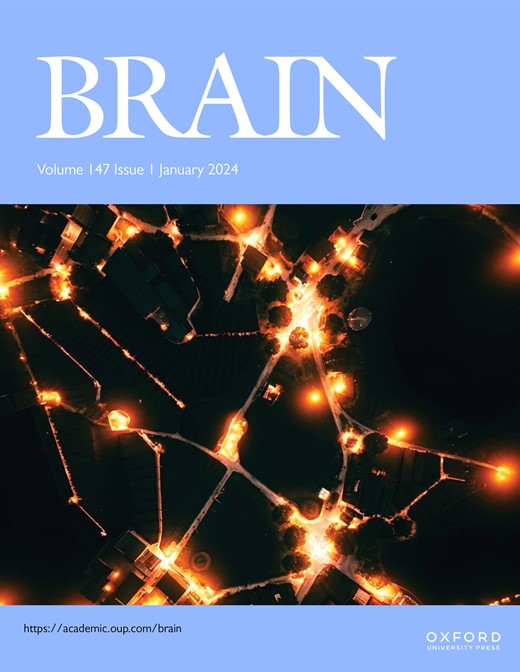Asymmetry in amyotrophic lateral sclerosis: clinical, neuroimaging and histological observations
IF 10.6
1区 医学
Q1 CLINICAL NEUROLOGY
引用次数: 0
Abstract
Amyotrophic lateral sclerosis is a progressive neurodegenerative disease of the motor system marked by significant phenotypic heterogeneity. Motor symptoms in the limbs consistently emerge focally and asymmetrically and, whilst variable, the pattern of regional progression related to the balance of clinical upper and lower motor neuron signs, upper versus lower limb onset and hand dominance to some extent. The neurobiological mechanisms and pathological correlates for this lateralised onset and non-random progression are uncertain. Cerebral neuroimaging studies have commonly reported structural and functional asymmetries in ALS, but the limited analysis of the pre-symptomatic phase has limited their implications. Post-mortem study of spinal cord provided strong evidence for focal pathology at symptom onset in ALS. Histopathological staging of molecular pathology in post mortem tissue lacks clinical correlation and an ordered, sequential temporal progression in life cannot be assumed. The development of integrated brain and cord MRI holds the hope of deepening understanding of the relationship between focal symptomatology and histopathological progression. This review considers the nature and implications of asymmetry in ALS across clinical, neuroimaging and post mortem histopathology, highlighting the current gaps in knowledge and the need for a broader investigative framework.肌萎缩侧索硬化症的不对称性:临床、神经影像学和组织学观察
肌萎缩侧索硬化症是一种进行性神经退行性疾病的运动系统显著的表型异质性。肢体的运动症状始终是局部和不对称出现的,虽然不同,但局部进展的模式在一定程度上与临床上肢和下肢运动神经元体征的平衡、上肢和下肢发病以及手优势有关。神经生物学机制和病理相关的这种侧发病和非随机进展是不确定的。脑神经影像学研究通常报道了ALS的结构和功能不对称,但对症状前阶段的有限分析限制了其意义。脊髓的死后研究为ALS症状发作时的局灶性病理提供了强有力的证据。死后组织中分子病理学的组织病理学分期缺乏临床相关性,不能假设生命中有序、连续的时间进展。脑和脊髓综合MRI的发展有望加深对局灶性症状和组织病理学进展之间关系的理解。这篇综述考虑了ALS在临床、神经影像学和死后组织病理学方面的不对称性的性质和影响,强调了目前知识上的差距和对更广泛的调查框架的需求。
本文章由计算机程序翻译,如有差异,请以英文原文为准。
求助全文
约1分钟内获得全文
求助全文
来源期刊

Brain
医学-临床神经学
CiteScore
20.30
自引率
4.10%
发文量
458
审稿时长
3-6 weeks
期刊介绍:
Brain, a journal focused on clinical neurology and translational neuroscience, has been publishing landmark papers since 1878. The journal aims to expand its scope by including studies that shed light on disease mechanisms and conducting innovative clinical trials for brain disorders. With a wide range of topics covered, the Editorial Board represents the international readership and diverse coverage of the journal. Accepted articles are promptly posted online, typically within a few weeks of acceptance. As of 2022, Brain holds an impressive impact factor of 14.5, according to the Journal Citation Reports.
 求助内容:
求助内容: 应助结果提醒方式:
应助结果提醒方式:


